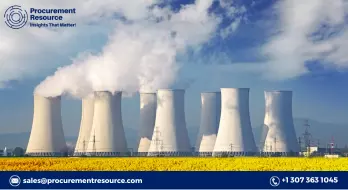China Will Be the World Leader in Nuclear Energy and Other Energy Sources, Anytime Soon

China currently dominates the world in overall energy output and generates nearly twice as much electricity as the United States, with 4.4 trillion kilowatt-hours compared to 7.5 trillion kilowatt-hour hours each year. With more than a third of China's population living in energy poverty or abject poverty, the problem will worsen. A significant portion of it will come from nuclear power.
China has 49 nuclear reactors in service this month, with a total capacity of 47.5 Gigawatts (GW), third only to the United States and France. With a complete capacity of 18.5 Gigawatts, there are 17 more under development, and none has been turned off. Nuclear power now contributes just 2 percent of China's electrical power, but the nation plans to outnumber all other sources someday.
This is roughly half of the nuclear capacity of the United States, which currently has 94 nuclear reactors in service with a combined capacity of 96.5 Gigawatts and two more under construction with a combined capacity of 2.2 Gigawatts. However, 39 reactors have been shut down, several for no apparent reason. Despite this, nuclear power accounts for 20 percent of America's electrical power and most of its non-fossil sources.
China had previously obtained nuclear technology from France, Canada, and Russia. Still, the most recent technology purchase was made through Westinghouse and France, and it is currently the primary source of nuclear technology development in China's foreseeable future. It is the foundation for China's latest indigenous reactors, the CAP1400 and CAP1000.
However, China's Hualong One and Two technologies, a locally designed third-generation reactor model, will be the future. On January 30 of this year, the first Hualong One unit began commercial operation.
The China National Nuclear Corporation and the China General Nuclear Power Corporation collaborated on the Hualong technology. Eighty-eight percent of its components, including all core equipment, are built in the United States, indicating mass manufacturing capabilities.
China developed 20 new nuclear power reactors with a total capacity of 23.4 Gigawatt between 2016 and 2020 as part of their 13th Five-Year Plan, bringing their overall capacity to 47 Gigawatt. This is anticipated to happen again in their next 5-year plan, which includes a new objective of 70 Gigawatt of nuclear power by 2025.
According to Luo Qi of China's Atomic Energy Research Initiative, by 2035, nuclear reactors in operation should reach over 180 Gigawatt, more nuclear than the United States and France combined. In Tianjin, China is establishing a nuclear university to train nuclear professionals for this development.
But it isn't going to end there. President Xi Jinping stated at a United Nations gathering that China aims to achieve net-zero carbon emissions by 2060. Somewhere in the north of 10 trillion kilowatt-hours at that time, a lot of nuclear, hydro, wind, and renewables will be required. Nevertheless, nuclear power will be at the heart of everything.
It is unlikely that coal will be phased out of the country very soon, and China plans to build 38.4 Gigawatt of new coal-fired power facilities by 2020, which will be cleaner than previous units. Despite the coronavirus pandemic, China's electricity consumption has climbed by 3 percent in the last year, and coal is still seen as a need.
That's because China's energy plans have little to do with climate change and are unconcerned about it. They are concerned about the rise of their country's middle class, its position as a global industrial leader, its expanding military might, and the energy security of a diversified mix.
Coal was simply the most straightforward and quickest means to provide sufficient energy to gain admission to the world's most elite economic club. However, due to the health risks associated with widespread coal usage, China is racing to develop alternatives even more rapidly than it did with coal, which is very quick Since 1992, China has built about 600 coal-fired power facilities in less than 18 years.
This was the world's most significant energy growth, resulting in 500 million middle-class Chinese by 2010. Because a country's economic and military might be directly proportional to the number of middle-class inhabitants in its population, this ushered in a new international economic order. An American President's visit to Beijing was no longer a momentous event.
China's new energy expansion aims to lift the country's remaining 600 million people out of poverty and into the middle class. This will happen before the middle of the century, barring some strange incident that may happen in any totalitarian country. China's GDP will surpass ours at that point. Their conventional military will be massive, their rule of Asia and the Pacific would be unchallenged, and they will be our most significant concern.



